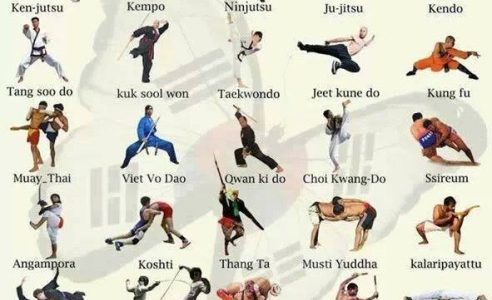Secret Differences Between Typical Martial Arts And Modern Combat Sports: An Extensive Evaluation
Secret Differences Between Typical Martial Arts And Modern Combat Sports: An Extensive Evaluation
Blog Article
Written By-Bright Brady
When you consider martial arts, do you lean extra towards the conventional methods or the modern battle sporting activities? Each course provides one-of-a-kind benefits and experiences, formed by their ideologies and training approaches. Typical martial arts stress personal development and self-control, while contemporary fight sports focus on competitors and performance. Recognizing these differences can lead you in choosing the right method for your journey. Yet exactly how do these distinctions materialize in training and approach?
The Philosophy and Background Behind Traditional Martial arts
While lots of people connect martial arts with physical combat, the approach and background behind typical martial arts run much deeper. You'll locate that these disciplines stress personal growth, discipline, and regard.
Stemming from best martial arts for autism , conventional martial arts were usually created for Self-Defense and spiritual advancement. They embody principles such as balance, harmony, and self-control, leading experts past plain battling abilities.
As you train, you'll not just find out strategies but likewise acquire understandings into the culture and values that formed these arts. The routines and traditions, frequently given through generations, cultivate a feeling of area and belonging.
The Competitive Nature of Modern Fight Sports
Modern fight sports have actually transformed the landscape of martial arts into a very affordable sector, where athletes take on in an examination of skill, approach, and endurance.
You'll see that competitors are typically organized with rigorous guidelines and regulations, guaranteeing justice and safety and security. These occasions bring in big audiences, fueling the enjoyment and intensity of matches.
Professional athletes educate carefully, not just for physical expertise yet also for mental durability, knowing that every information counts in the ring. The adrenaline thrill during competitions is apparent, as fighters push their restrictions to declare success.
Fans appreciate the athleticism and virtuosity included, making modern-day fight sports a thrilling phenomenon that remains to evolve and captivate enthusiasts worldwide.
Training Approaches and Strategies: A Comparative Evaluation
The affordable environment of contemporary combat sports demands innovative training approaches that differ substantially from conventional martial arts.
In modern training, you'll concentrate on particular techniques, sparring, and conditioning, frequently utilizing drills that replicate actual battle scenarios. https://self-defense-man-vs-woman31740.fare-blog.com/35213666/maintaining-enthusiasm-in-your-martial-arts-trip 'll see a focus on measurable efficiency and frequent competition to assess your abilities.
In contrast, conventional martial arts prioritize kinds, katas, and philosophical mentors, commonly stressing technique and regard over competition.
Training is typically less extreme and may include recurring technique rather than real-time sparring.
While both approaches build skill and physical fitness, contemporary combat sports provide a more dynamic and adaptable training environment, preparing you for prompt difficulties in the ring or cage.
Select the path that aligns with your goals and rate of interests.
Final thought
In selecting between traditional martial arts and contemporary combat sports, it truly comes down to what you value a lot of. If you're looking for personal development, discipline, and a sense of area, typical arts might be your finest fit. But if you flourish on competitors and real-time obstacles, modern fight sports could be the way to go. Eventually, both courses supply special advantages, so it's all about aligning your training with your individual objectives and rate of interests.
